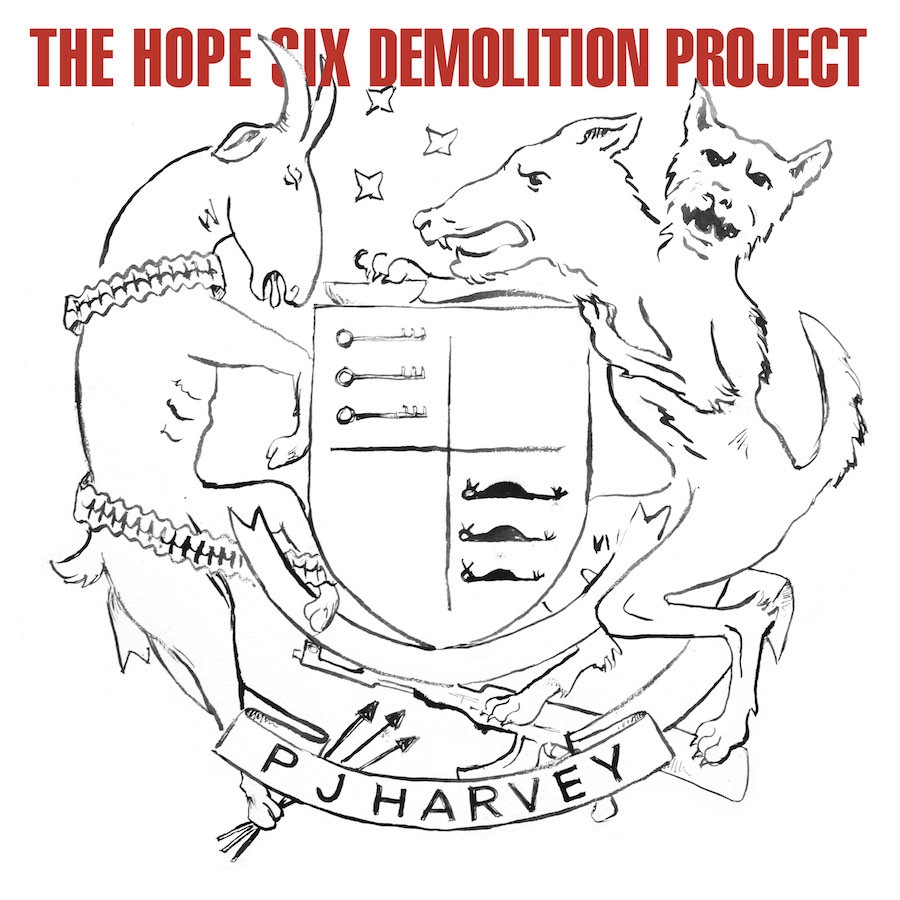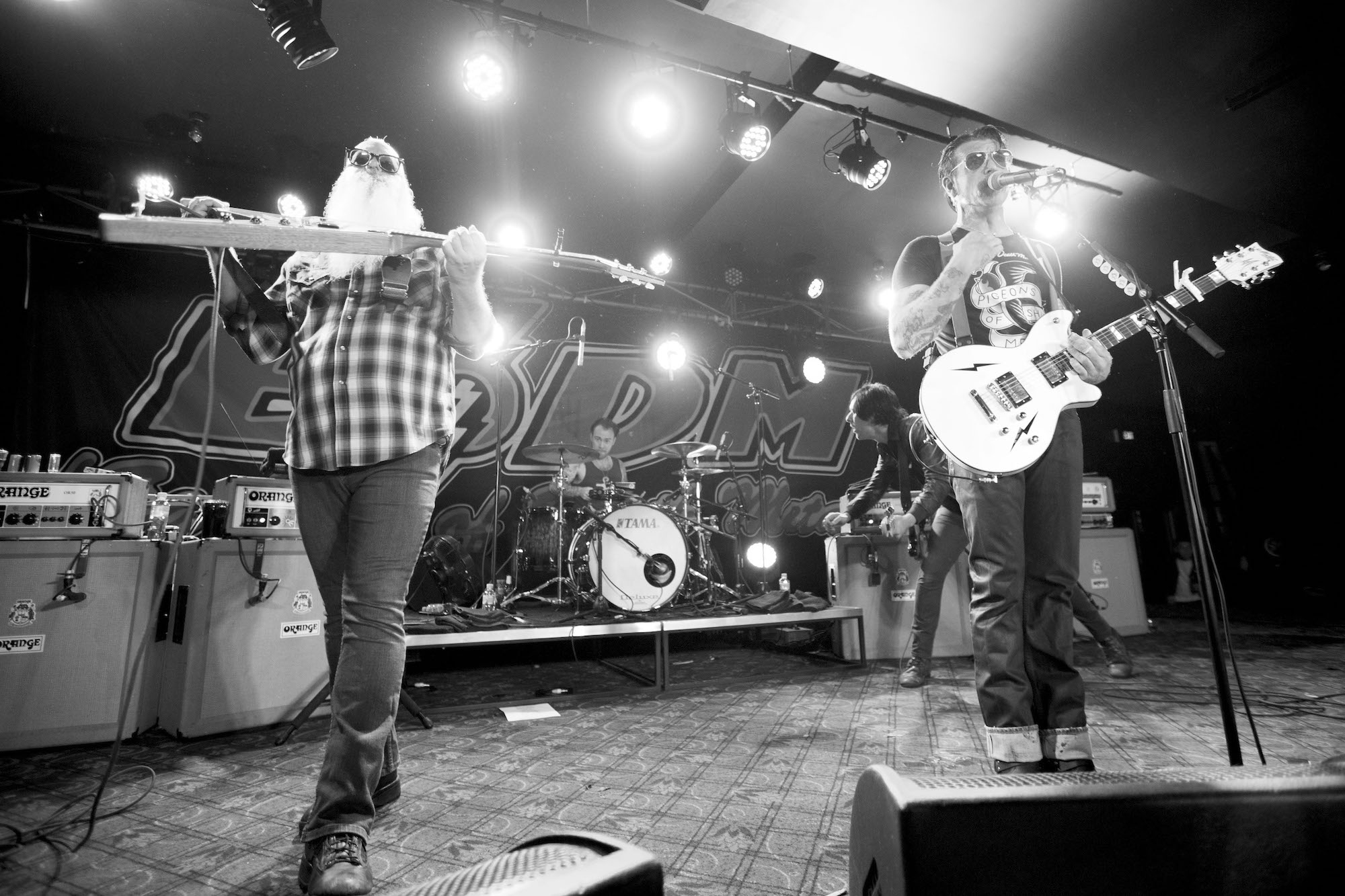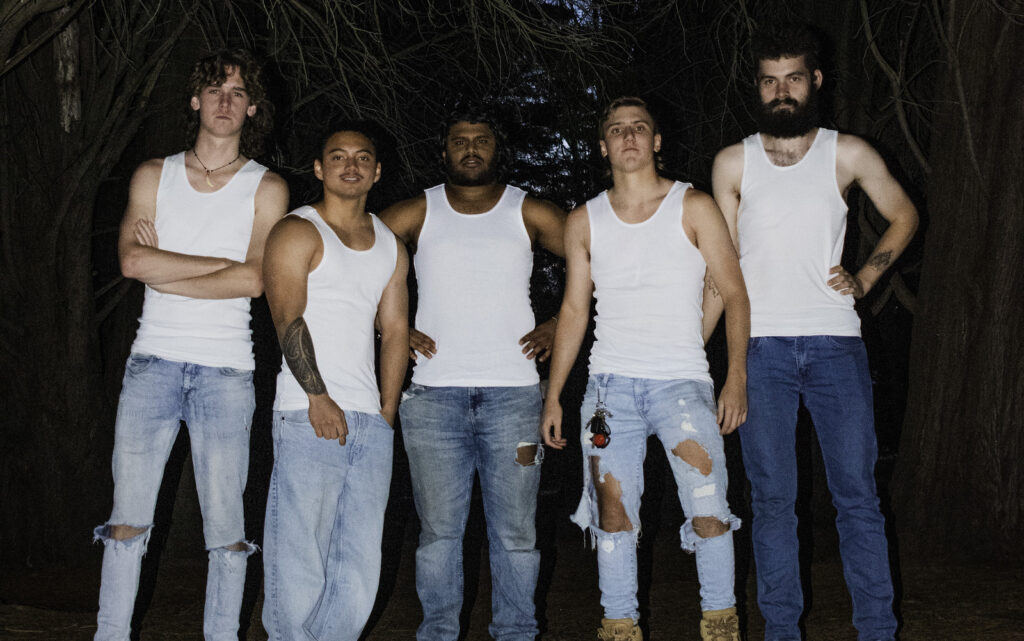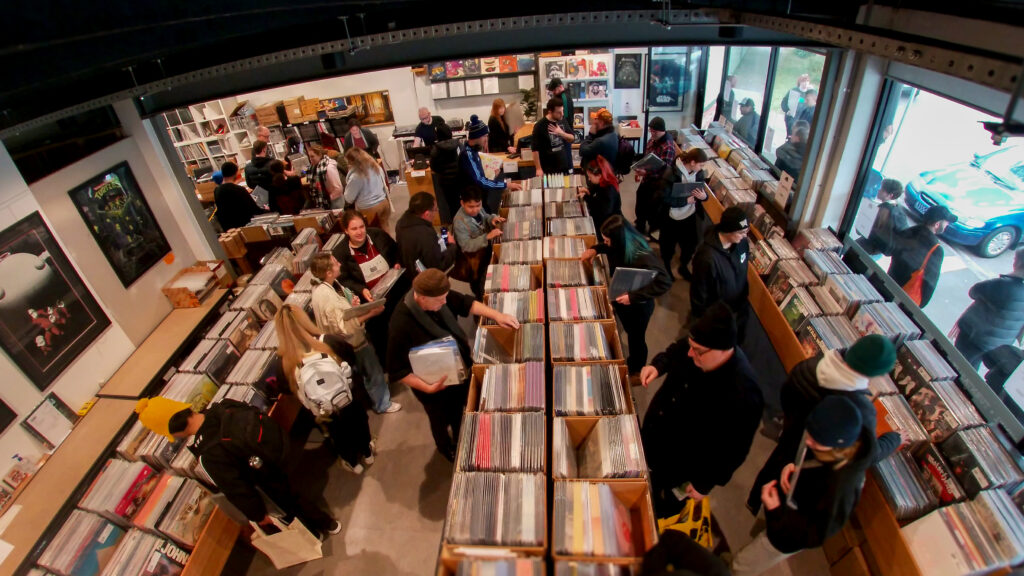PJ Harvey returns after a five-year absence, picking up where she left off with 2011’s acclaimed Let England Shake. Having been informed by trips she undertook to Afghanistan, Kosovo and Washington, Harvey remains appalled and enraged on The Hope Six Demolition Project, as she confronts social injustices with her ever eloquent and striking brand of poetry.
Surrounding herself with long time collaborator Mick Harvey and producers Flood and John Parish, these recordings were made during an open to the public exhibition a la Regurgitator’s Band in a Bubble concept.
Perhaps this method of recording encouraged the live feeling of these songs – despite the layers of overdriven guitars and screeching saxophones, the album still manages to sound quite organic and charmingly rough around the edges.
The prominence of rhythmic elements in the mix such as hand claps and acoustic guitars also contribute to a sound that is fairly sparse and acoustic, while conversely the more involved instrumental parts form a wall of noise.
The Wheel is a good example of this, its entire first minute and a half is a repetitive blues stomp driven by an electric guitar soloing frantically, all before Harvey begins to sing. However once she does, the melody and acoustic guitar chords reveal it to be an English folk song, and a style that the one-time poster girl for 1990s alternative rock has grown into gracefully. Over time Harvey has stripped away the sultry rock persona that once informed her vocal delivery and now sings in a higher register which feels more honest, more intimate, and as strong as ever.
On standout track Medicinals Harvey walks aroundWashington D.C., thinking of the spices and vegetables that once inhabited the city, growing wildly and used as medicine. She compares them with the alcohol that is used by the capital’s poor communities, in what is a moving piece of musicianship and songwriting.
“Do you see that woman / Sitting in the wheelchair / As from inside a paper wrapper she sips from a bottle / A new painkiller / For the native people.” It’s a very vivid image, and one in keeping with the album’s lyrical position as outraged narrator, wandering the cities as an outsider. Fans of Harvey’s recent output will find plenty to like here.
BY ALEX WATTS







